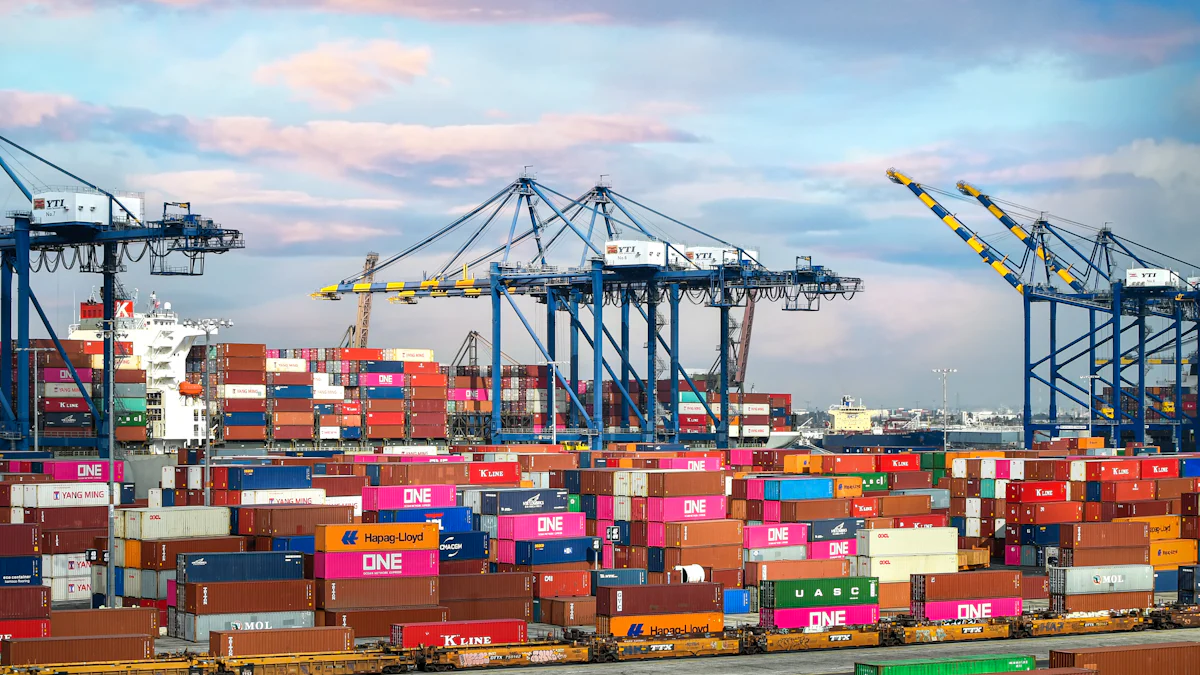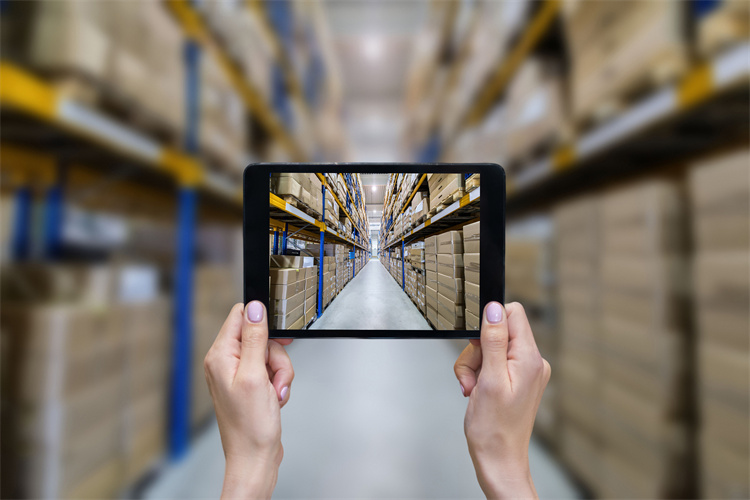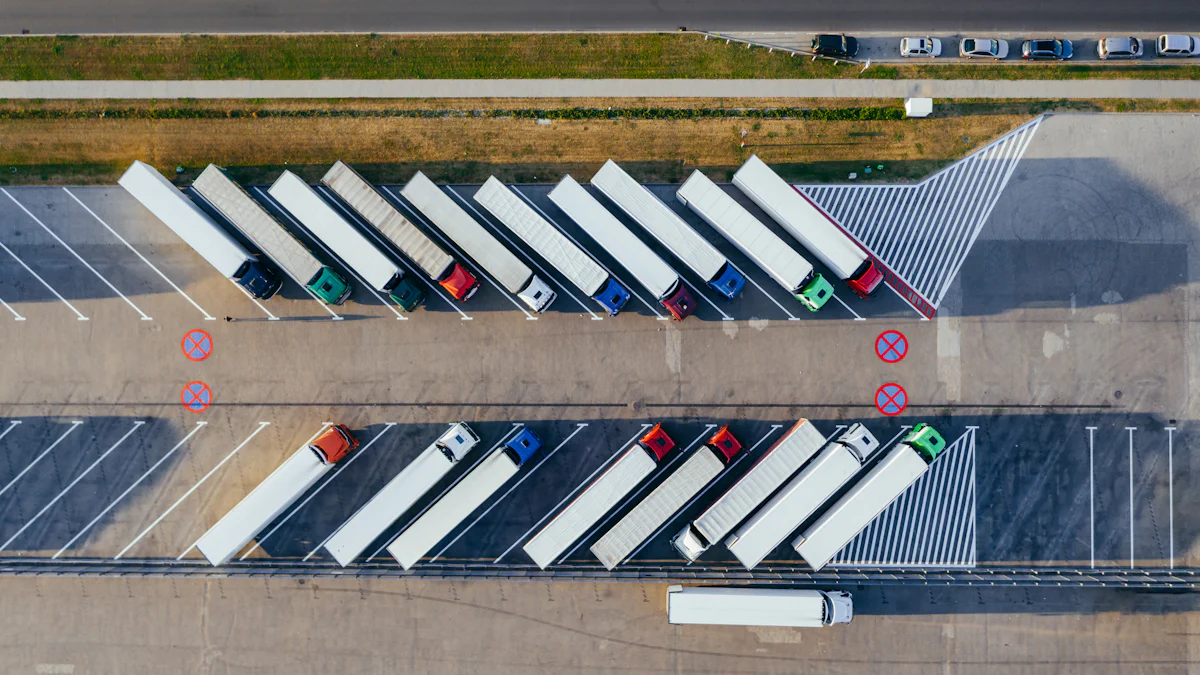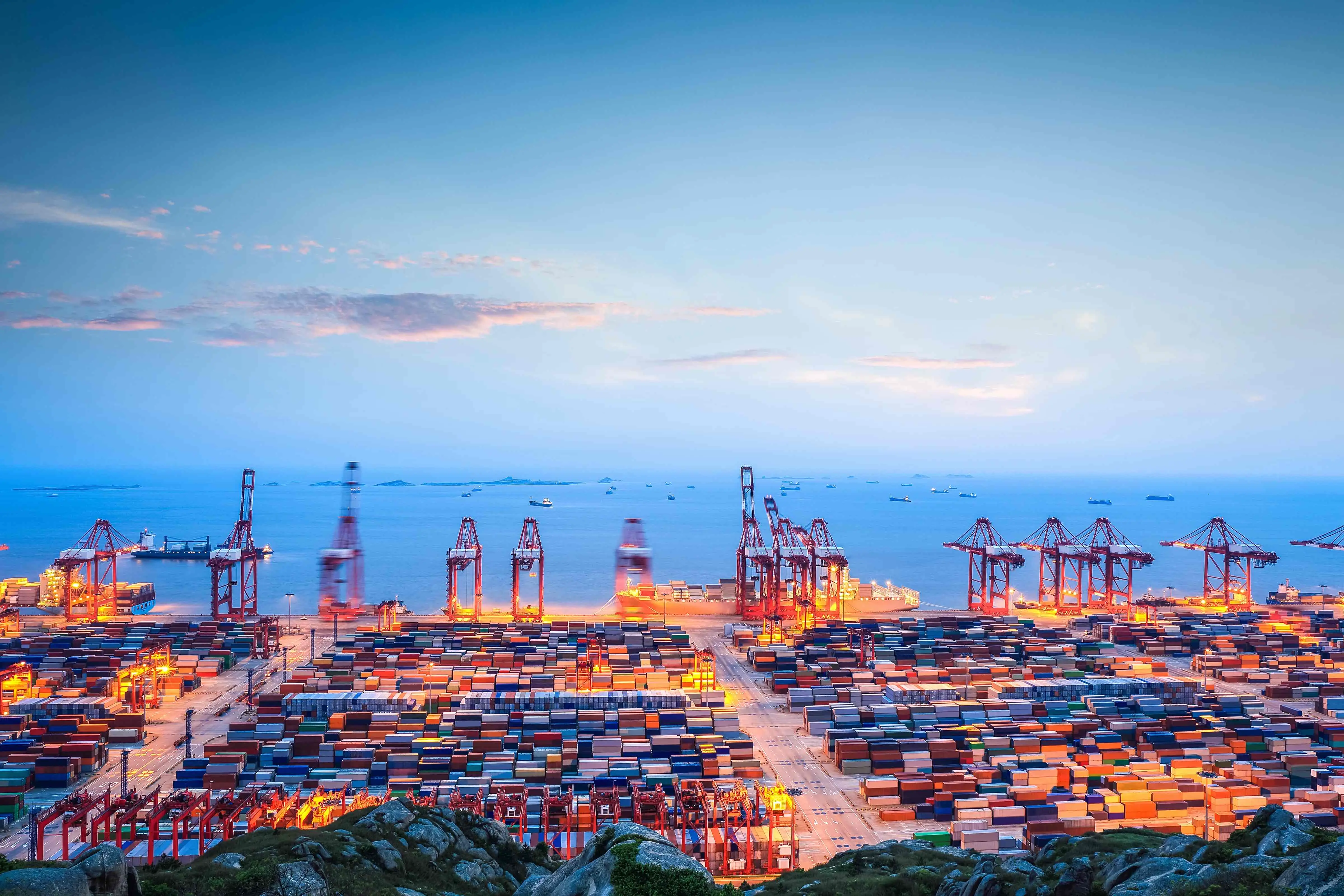Emerging Trends Redefining the Logistics Industry in 2025

The logistics industry is undergoing rapid transformation. By 2025, global e-commerce sales are projected to hit $7.4 trillion, driving innovations in last-mile delivery. Rising labor costs, up 9.5% year-over-year, and customer demands for faster, transparent services are reshaping logistics trends. Companies adopting AI and IoT lead these logistics industry trends toward efficiency and resilience.
Key Takeaways
Use AI and machines to make supply chains faster and smarter.
Use eco-friendly methods like electric cars to help the planet.
Track shipments live to keep customers happy and informed.
Technological Advancements Shaping the Logistics Industry

AI-Driven Supply Chain Optimization
Artificial intelligence is revolutionizing the logistics industry by enhancing efficiency and decision-making. AI-driven supply chain optimization allows you to predict demand, manage inventory, and streamline operations. Companies like UPS use AI-powered systems, such as ORION, to optimize delivery routes, saving fuel and reducing miles traveled. Similarly, PepsiCo and Unilever have improved forecast accuracy by leveraging AI analytics, helping them meet customer demands more effectively. These advancements not only reduce costs but also improve service quality, making AI a cornerstone of digital innovation in logistics.
Automation and Robotics in Warehousing
Automation is transforming warehouses into hubs of efficiency. Robots can work continuously, increasing productivity and reducing errors in inventory management. Automated systems also enhance safety by handling repetitive tasks, allowing workers to focus on more fulfilling roles. For example, supply chain automation enables real-time inventory tracking, preventing overstocking or shortages. By integrating automation and artificial intelligence, you can scale operations quickly and meet fluctuating demands. This trend is reshaping warehousing, making it more resilient and cost-effective.
Blockchain for Enhanced Transparency
Blockchain technology is one of the key trends shaping logistics. It creates secure, unchangeable records of transactions, ensuring transparency and trust. With blockchain, you can track goods in real time, reducing the risk of fraud and streamlining documentation. This technology also enhances collaboration among supply chain stakeholders by providing a tamper-evident ledger. By adopting blockchain, you can improve visibility and efficiency, which are critical for navigating the complexities of global trade in 2025.
5G Connectivity and IoT Integration
The integration of 5G and IoT is unlocking new possibilities in logistics. These emerging technologies enable real-time data sharing, improving demand forecasting and route optimization. With 5G, you can build smart warehouses that respond quickly to changes in inventory levels. This connectivity also supports advanced applications like predictive maintenance, enhancing operational efficiency. By adopting 5G and IoT, you can create a more responsive and sustainable supply chain, positioning your business to thrive in a rapidly evolving landscape.
Sustainability and Green Logistics in 2025

Adoption of Electric and Autonomous Vehicles
Electric and autonomous vehicles are transforming logistics operations. Companies are investing heavily in these technologies to reduce emissions and improve efficiency. For example:
Company | Investment Amount | Focus Area |
|---|---|---|
Deutsche Post | Development of electric transport | |
and micro e-mobility units |
Autonomous vehicles are also enhancing last-mile deliveries. They optimize operations by reducing delivery times and costs. Companies like Torc Robotics are developing scalable autonomous driving systems for Freightliner trucks. ISEE’s autonomous yard truck solutions address labor shortages while improving efficiency in distribution centers. By adopting these innovations, you can align with sustainability goals and prepare for the future of logistics.
Carbon-Neutral Supply Chains
Achieving carbon neutrality in the supply chain requires strategic planning. Many companies now optimize transportation methods by using electric or hybrid vehicles and consolidating shipments to reduce trips. Engaging suppliers in collaborative strategies can further enhance sustainability efforts. Measuring and tracking carbon emissions helps identify energy efficiency opportunities. Recycling processes and circular economy practices also play a crucial role. Setting sustainability targets alongside sales goals ensures long-term growth while meeting environmental responsibilities. These steps not only reduce emissions but also position your business as a leader in sustainability-focused technology.
Circular Economy Practices in Logistics
Circular economy practices are reshaping the logistics industry by reducing waste and promoting resource efficiency. Reverse logistics manages the return flow of products to recover materials efficiently. Zero-emission transportation supports this process. Data management and tracking, powered by IoT and AI, improve decision-making and monitor material movement. Collaboration among stakeholders enhances resource recovery and reduces carbon footprints. Supply chain optimization, including route planning and inventory management, minimizes environmental impact. By adopting these practices, you contribute to a sustainable future while improving operational efficiency.
Customer-Centric Innovations in Logistics
Real-Time Tracking and Visibility with JusLink
Real-time tracking has become a cornerstone of modern logistics. JUSDA’s JusLink platform leverages artificial intelligence and real-time data sharing to provide unparalleled visibility across the supply chain. You can monitor shipments at every stage, ensuring transparency and reducing delays. This technology enhances decision-making by offering predictive insights, helping you address potential disruptions before they escalate. Geolocation technology further optimizes fleet operations, improving safety and efficiency. By adopting JusLink, you gain a competitive edge in 2025, where resilience and customer satisfaction are key trends shaping logistics.
Hyper-Personalized Delivery Experiences
Personalization is redefining customer expectations in logistics. Companies now use machine learning algorithms to analyze customer preferences and behaviors. This allows you to customize delivery options, from packaging choices to specific time slots. Predictive logistics powered by artificial intelligence ensures timely deliveries while optimizing supply chain operations. For example:
Customers can tailor their delivery preferences to suit their schedules.
Sustainable packaging options align with growing demands for eco-friendly practices.
AI-driven systems enhance decision-making, ensuring efficient and accurate service.
These innovations not only improve customer satisfaction but also align with sustainability goals, making them essential for businesses adapting to emerging logistics trends.
Same-Day and On-Demand Delivery Models
Same-day and on-demand delivery models are transforming how you meet customer needs. These models offer faster delivery times and improved satisfaction. However, they come with operational challenges, such as logistical planning and high costs. The benefits, though, outweigh these hurdles:
Challenges | Benefits |
|---|---|
Logistical planning | Faster delivery times |
High operational costs | Improved customer satisfaction |
Demand forecasting & capacity management | Increased sales |
Inventory management | Reduced shipping costs |
Customer expectations and communication | Reduced returns |
Regulations and compliance | Competitive advantage |
By integrating automation and advanced technology, you can overcome these challenges while enhancing efficiency. Elastic logistics, which adjusts operations based on demand, further supports these models. This adaptability ensures your business remains competitive in a rapidly evolving market.
Supply Chain Resilience and Visibility
Predictive Analytics for Risk Management
Predictive analytics tools are transforming how you manage risks in the supply chain. These tools analyze data from diverse sources, such as weather patterns, geopolitical events, and supplier performance, to foresee disruptions. By detecting potential issues early, you can mitigate risks before they escalate. For example:
Predictive analytics identifies supply chain disruptions by analyzing real-time data.
It helps you assess risks and create contingency plans.
You can avoid costly delays by finding alternative suppliers in advance.
This proactive approach ensures supply chain resilience and minimizes operational downtime. By leveraging predictive analytics, you gain a competitive edge in 2025, where agility and foresight are critical.
Diversification of Supply Chain Networks
Diversifying your supply chain network strengthens its resilience against disruptions. Companies are adopting strategies like multi-shoring, which spreads manufacturing and supplier locations across regions. Expanding your supplier network ensures redundancy and reduces dependency on a single source. Consider these approaches:
Build partnerships with global and local suppliers to enhance flexibility.
Use multiple transportation modes to diversify routes and reduce risks.
Expand logistics infrastructure by adding hubs and warehouses.
These strategies protect your operations from geopolitical tensions, trade policy shifts, and other uncertainties. A diversified network ensures end-to-end resilience, enabling you to adapt to evolving trends in the logistics industry.
Enhanced Collaboration Across Stakeholders
Collaboration among stakeholders improves supply chain visibility and fosters innovation. When you engage stakeholders effectively, you can address grievances promptly and align on shared goals. The benefits of collaboration include:
Benefit | Description |
|---|---|
Effectively Address Grievances | Resolve issues quickly, minimizing delays in time-sensitive projects. |
Support Sustainability | Diverse perspectives enhance long-term performance and sustainability efforts. |
Increase Transparency | Promote accountability and trust through open communication. |
Share Resources | Pool resources to reduce costs and strengthen relationships. |
By fostering collaboration, you create a more transparent and efficient supply chain. This approach not only enhances resilience but also drives innovation, helping you stay ahead in a rapidly changing landscape.
Global Trade and Regulatory Changes Impacting Logistics
Evolving Trade Policies and Tariffs
Trade policies and tariffs are reshaping logistics strategies in 2025. Recent changes include a 10% tariff on Chinese imports and the suspension of the de minimis exemption, which impacts e-commerce shipments. India has reduced import duties on luxury vehicles and lithium-ion batteries, while Canada and Mexico secured a 30-day delay on new tariffs by committing to enhanced border security. These shifts influence supply chain costs and require you to adapt quickly.
To navigate these changes, you can build partnerships with trusted customs brokers and logistics providers. These collaborations help you manage international trade challenges and gain insights into local regulations. Additionally, using Foreign Trade Zones (FTZs) allows you to defer customs duties, improving cost efficiency. By staying informed and proactive, you can mitigate risks and maintain a competitive edge.
Cross-Border E-Commerce Growth
Cross-border e-commerce continues to grow, driven by consumer demand for global products. However, the suspension of the de minimis exemption adds complexity to international shipments. You must now focus on compliance and efficient customs processes to avoid delays. Strong cross-border partnerships can provide valuable insights into local markets, ensuring smoother transactions.
Investing in automation and green technologies can streamline your operations and meet consumer expectations for sustainability. Economic incentives from governments also support transportation network improvements, reducing shipping times and costs. By aligning your strategies with these trends, you can capitalize on the expanding e-commerce market.
Compliance with New Environmental Regulations
New environmental regulations are transforming logistics operations. For example:
Regulation | Description |
|---|---|
Promotes sustainable trade practices, including digital product passports and rules for unsold goods. | |
European Union Deforestation Regulation | Requires manufacturers to ensure products are non-deforestation compliant. |
EU’s Carbon Border Adjustment Mechanism (CBAM) | Introduces reporting requirements for high CO2 emissions, effective in 2025. |
To comply, you should invest in green technologies and adopt sustainable practices. These efforts not only meet regulatory requirements but also align with consumer demand for eco-friendly solutions. By prioritizing sustainability, you position your business as a leader in the evolving logistics landscape.
The Role of JUSDA and the China-Europe Express Rail in 2025 Logistics Trends
Leveraging the China-Europe Express Rail for Cost-Effective Solutions
The China-Europe Express Rail offers a transformative solution for businesses seeking efficiency in logistics. This rail network reduces transit times significantly, delivering goods in 12-16 days compared to the 30-45 days required for maritime shipping. You can rely on this service for time-sensitive products, ensuring faster delivery and improved supply chain efficiency. The rail system has transported over 50,000 types of goods, showcasing its ability to handle diverse logistics needs. This versatility enhances cost-effectiveness, making it a preferred choice for businesses aiming to optimize operations. Additionally, the rail service reduces carbon emissions by 30% compared to air freight, aligning with sustainability goals while lowering overall costs.
JUSDA’s Innovations in AI-Driven Supply Chain Optimization
JUSDA leverages artificial intelligence to revolutionize supply chain management. Through its JusLink Smart Supply Chain Management Platform, you gain end-to-end visibility and dynamic control over operations. This platform integrates real-time tracking and analytics, enabling you to address potential issues proactively. JUSDA also employs advanced tools like dynamic inventory management and auto procurement to streamline processes. These innovations enhance operational efficiency, reduce risks, and ensure seamless logistics. By adopting JUSDA’s AI-driven supply chain optimization, you can stay ahead of trends and improve decision-making in a competitive market.
Enhancing Global Trade with JUSDA’s Comprehensive Solutions
JUSDA provides a wide range of solutions to support global trade.
Comprehensive Service Offerings: You can benefit from services like VMI, cross-border logistics, warehousing, and distribution.
Technological Integration: The JusLink platform uses advanced technology, including RFID and WMS, to deliver end-to-end visibility and control.
Localization Strategy: JUSDA tailors its services to specific markets, such as North America, Vietnam, and India, ensuring relevance and effectiveness.
These solutions empower you to navigate the complexities of global trade with ease, enhancing efficiency and fostering growth.

JUSDA Solutions
To provide you with professional solutions and quotations.
The logistics industry in 2025 will thrive on innovation, sustainability, and adaptability. To stay competitive, you must embrace emerging trends shaping the future. Focus on technological advancements like machine learning and data analytics to enhance decision-making. Adopt sustainable practices to reduce emissions and align with global goals.
Key takeaways for a resilient future in logistics:
Invest in advanced systems to optimize supply chains.
Collaborate globally to navigate trade complexities.
Prioritize customer-centric solutions like real-time tracking.
By leveraging solutions like JUSDA’s China-Europe Express Rail and JusLink platform, you can position your business for long-term success in a rapidly evolving landscape.
See Also
Five Key Trends Shaping Future Supply Chain Efficiency
Transforming Logistics: The Role of AI in Supply Chains
Digital Technology: Paving the Way for Future Logistics
Supply Chain Innovations That Are Transforming Logistics Today
